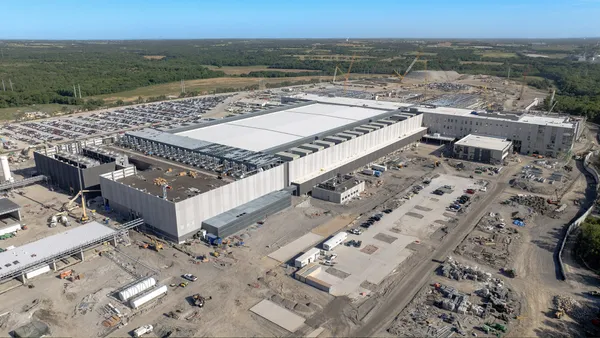Managing hundreds or even thousands of employees across multiple locations and on different project timelines can be a Herculean task. One of the most important things you can do as a contractor is effectively sharing resources across your office locations. This is especially true for your most important resource, your people.
In this article, we’ll explore the advantages of sharing your people across multiple offices and locations, as well as the steps needed to effectively implement and manage this strategy.
Why is sharing hard?
If you ask most contractors if they’d like to share their resources across multiple locations, the answer is generally “yes”. So, if the desired outcome is shared resources, what’s stopping them? The most common reasons revolve around the systems in place for planning those resources. Those systems are usually spreadsheets or spreadsheet-based, which have severe limitations for collaboration.
This is how the story goes: one person or a small team owns a spreadsheet. They have a workforce planning meeting and they spend the whole meeting updating data, rather than executing strategy. Over time this leads to stagnation and frustration.
Now add five more offices and multiple teams doing this. Collaborating this way gets out of control fast, leaving you behind on project timelines and recruitment.
What if there was a better way?
Benefits of Sharing Resources
Before we get into the steps you can implement, you should understand why it’s worth sharing resources across multiple offices and what the benefits are.
- Optimized resource allocation: Sharing resources across multiple offices allows construction companies to allocate their workforce more efficiently. By having visibility on labor shortages and surpluses, companies can redistribute employees to areas where they are most needed.
- Enhanced collaboration: When employees from different offices work together, they bring diverse perspectives, knowledge and skills to the table. This can lead to improved problem-solving and innovative solutions.
- Increased employee retention: Sharing labor across offices can be particularly useful during an economic downturn, as it allows companies to find work for their employees in other locations rather than laying them off. This helps to maintain a skilled and experienced workforce, ensuring the company remains competitive once the economy recovers.
- Better employee development: This is especially useful for Human Resources leaders. If you share labor effectively, you can provide learning opportunities for willing employees who want to work with different project teams on different kinds of projects, helping them expand their skill set and experience.
Steps to Effectively Share People Across Multiple Offices
The best way to get the benefits of sharing resources across multiple offices is to rethink the way you do workforce planning. It’s not that you’re incapable of planning properly, it’s that the systems and tools you have in place for the process aren’t built to handle the complexity of construction.
Tools like Bridgit Bench were created to solve the problems that come along with workforce planning. With Bridgit, you’ll be able to track and adjust your workforce plan on the fly from anywhere within the tool.
For sharing resources across multiple offices you’ll need visibility on a few key areas and metrics:
- Tracking employees' willingness to relocate: Before implementing a resource-sharing strategy, it's essential to identify which employees are open to the idea of relocation. This can be achieved by conducting regular surveys, updating employee profiles or simply having open conversations with team members.
- Visibility on labor shortages and surpluses: To effectively share labor across multiple offices, companies need to have a clear understanding of their workforce's current distribution and utilization. This involves continuously monitoring labor demands and employee availability in each location.
- Communication between offices: Sharing resources requires seamless communication between different offices. There’s a Project Broadcast feature in Bridgit Bench that makes it easy to send messages to entire project teams in real time.
- Visibility on regional projects across the organization: Construction companies need to maintain an updated overview of ongoing projects across all locations to make informed decisions about labor sharing. This information can help identify opportunities for resource-sharing and enable better coordination between offices.
Before we go, here’s a quote from Ed McCauley, VP of Innovation at Wohlsen about how Bridgit Bench helped them support each other across different locations:
“Fast-forward from last year to this year, our utilization is exceeding what our target metrics are… We have someone here in Pennsylvania that’s supporting a project in Connecticut now and that’s not something that would’ve traditionally happened. Since we have full organizational insight, we’re able to do that in a far more effective way.”
Article Author: Nemanja Simic
Nem is a content writer at Bridgit. He started his career in business development where he spoke to contractors daily, providing him with a deep understanding of the problems around workforce planning in the construction industry. Using this insight, Nem developed an approach that aims to provide digestible, data-backed advice to help contractors get the most out of their workforce strategies.










